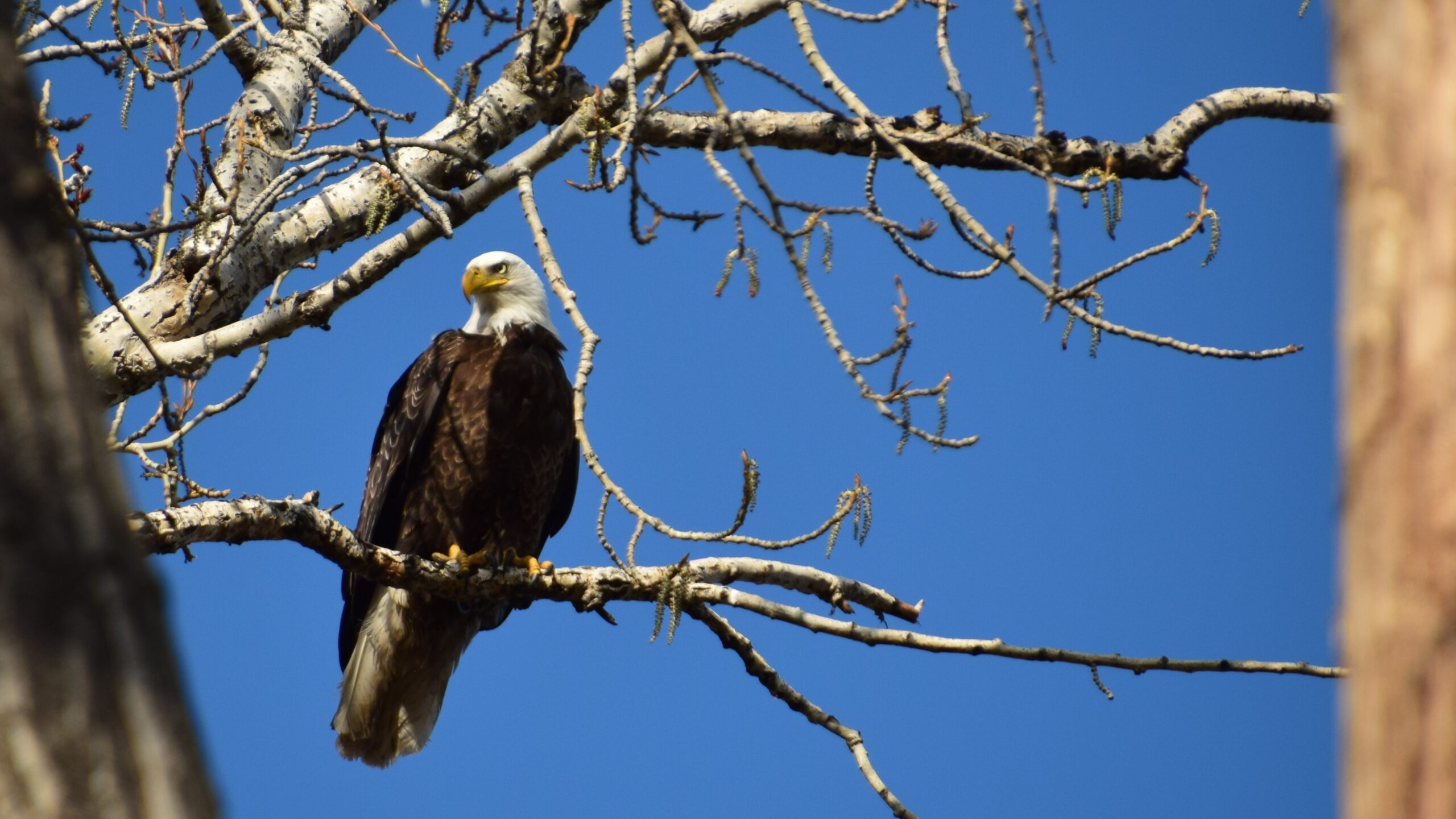In almost two years on the road we have stayed in approximately 90 campgrounds in 34 states. But I believe that none of the rest are as surrounded with such a diversion of wildlife as this one in Southeastern Washington. Throughout the day we hear an owl calling from the woods that stand 50 feet from our rig. Once or twice a day we hear the sound of geese and we look up to see them rising out of the nearby stream to continue their migration. Herds of wild turkeys roam the area, and a group wandered out along the edge of the campground the other night, strutting their stuff while guardedly watching us. Yesterday we saw a dozen or more turkeys in separate sightings between here and the main highway 4 miles away. Slowing the vehicle would send them scurrying for cover.
Many encounters are fleeting. A hawk hunts the hillside opposite us, but we usually only see him when he dives for prey. On one of my first trips down to the stream, a white-tailed deer bounded out of the brush in front of me and bounced his way through the forest. Every day or two we hear the hyperactive neighborhood woodpecker, who sounds very close by but as yet un-spotted.
While driving towards the Blue Mountains about a half hour from our camp, my “hunter heritage” wife spied two different groups of animals at different times along the trip. We pulled over to check out each, first discovering a herd of about 20 deer. In the other group we counted 14 mountain sheep working their way across the hillside above us. Mind you, all of the encounters mentioned in these paragraphs have occurred in a 21-day span when we have been mostly quarantined in the trailer. I’m sure this is only a small sample of the abundant fauna around us.
But the jewel in the crown of this campground is the resident pair of bald eagles. Scarcely 100 yards from us this avian couple is building an aerie, which tells us that mating time is close at hand. Majestic, but at the same time exceedingly cautious, these birds can be hard to catch with the camera, and they have challenged my photographic skills mightily. I am pleased with most of the pictures that you see below, but there are at least 20 or 30 failures for every one that turns out. Between the distance that they try to keep, the denseness of the forest in which they built the nest, and the speed with which they move, it is difficult to obtain shots that are close, clear and unobstructed. But when you get it, the shot is priceless.
IMPORTANT: If you click on any picture, it should open a full screen version that is larger and without the caption, particularly useful with these photos. Once it opens, you will see a small magnifying glass with a plus sign. If you move the glass to whatever part of the picture you want enlarged, you can click again see a close-up of that section. On the picture below, you can do this to zoom in on any particular mountain sheep for example. Click it again to return to normal, and hit the back arrow to return to the gallery.

Mountain sheep. The one in the center has a fairly nice curl. 
Wild turkeys strutting their stuff. Zooming in gives you a much better view. 
Eagle aerie in the early stages of the build. I think this is a previous nest being remodeled. 
They bring in the construction materials one branch at a time. 
He took a few minutes deciding if this branch was OK, just long enough to allow me to snap this. 
When they take a break, they are constantly vigilant. 
If you watch for more than a few seconds, they will fly away. 
It took me a while to learn to use a fast shutter. 
And finally you get one or two great shots that make all the effort worthwhile. 